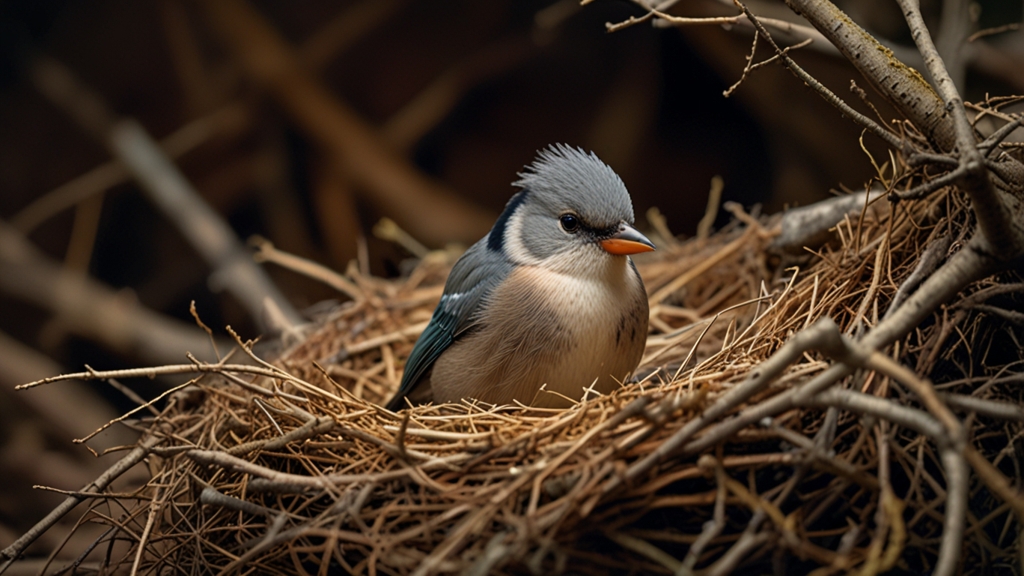Why Do Birds Build Nests? The Secrets of Their Architecture Revealed
Birds are remarkable creatures, known for their vibrant colors, mesmerizing songs, and, perhaps most intriguingly, their ability to build nests. These structures are more than just homes; they are masterpieces of natural engineering, meticulously crafted to serve a multitude of purposes. But why do birds go to such great lengths to build nests? Let's unravel the secrets of their architecture and understand the multifaceted reasons behind this fascinating behavior.
Shelter for Eggs and Young
The primary function of a bird's nest is to provide a safe and secure place for eggs and, eventually, nestlings. In nature, vulnerability is a paramount concern. By building a nest, birds create a controlled environment where their offspring can develop without constant threats from predators, weather, or other hazards.
"The importance of nests for the reproductive success of birds cannot be overstated. These structures ensure that the eggs are incubated efficiently and that the young are protected during their most vulnerable stages." – Ornithologist Sarah Jenkins
Thermal Regulation
Temperature control is another critical reason why birds build nests. Eggs must be kept at a certain temperature to ensure proper development. Birds use a variety of materials, such as twigs, leaves, feathers, and even mud, to construct nests that can insulate against harsh weather conditions. The architecture of the nest, along with the chosen location, helps maintain the optimal temperature for incubation.
For instance, the Common Eider, a sea duck, plucks down feathers from its own body to line the nest, creating an exceptionally warm and insulated environment for its eggs.
Camouflage and Concealment
In the wild, being inconspicuous can be a matter of life and death. Many birds design their nests to blend seamlessly with the surrounding environment, reducing the chance of being discovered by predators. The choice of materials, the nest's shape, and its location all play pivotal roles in this natural camouflage.
"Camouflage is not just about blending in but also about breaking the outline of the nest so it doesn’t appear as an obvious target. Birds exhibit a keen understanding of their environment's visual and physical characteristics." – Wildlife Biologist Amanda Rivera
Materials and Techniques
The diversity of nesting techniques and materials used by birds is astonishing. Some species, like the Weaver birds, are known for their intricate woven nests, which can be marvels of complexity. Others, like woodpeckers, excavate holes in trees, while certain swallows use mud to construct their nests against vertical surfaces.
This diversity is not random but rather a result of evolutionary adaptations to specific environments. The choice of nesting material can also influence the nest's durability, insulation properties, and even its vulnerability to parasites.
Social Signaling
Nests can also serve as social signals. In some species, the quality and construction of the nest are indicators of the builder's fitness. A well-constructed nest may attract more potential mates, suggesting that the builder has good genes and is capable of providing for the offspring.
"In species where nest-building skills are a display of prowess, the nest becomes not just a home but a billboard advertising the builder's capabilities. This is particularly evident in species like the bowerbirds." – Evolutionary Ecologist John Michaels
Nests as Multi-Functional Structures
For many bird species, the nest is not merely a one-time structure but a multi-functional space. Some birds reuse their nests year after year, renovating and reinforcing them as needed. Others may use the nest for roosting, even outside the breeding season.
A fine example of this is the Bald Eagle, whose nests can become enormous over the years as the birds add new materials each breeding season.
Conclusion
The architecture of bird nests is a testament to the incredible ingenuity and adaptability of birds. Each nest is a carefully crafted solution to the specific challenges faced by the bird, whether they be environmental, predatory, or social. By understanding the reasons behind nest-building, we gain deeper insight into the complex lives of these avian architects and the remarkable strategies they employ to ensure their survival.
So, the next time you come across a bird's nest, take a moment to appreciate the intricate design and the evolutionary brilliance it represents. These natural structures are not just shelters but are sophisticated solutions perfected over millions of years.








